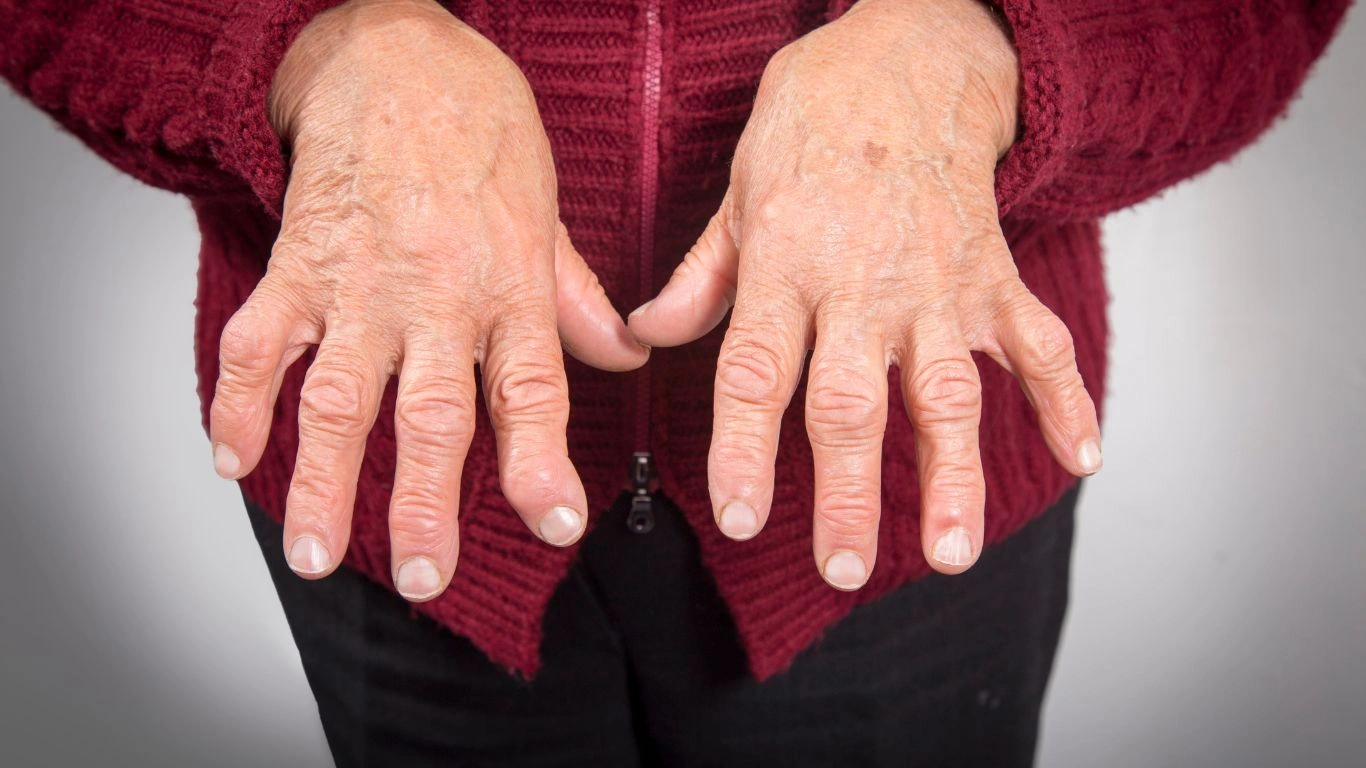Managing Rheumatoid Arthritis: Top Exercises to Reduce Inflammation
Managing inflammation caused by rheumatoid arthritis (RA) is no easy feat. As someone who has worked with individuals living with RA for many years, I’ve seen firsthand the struggles and challenges that come with it. Rheumatoid arthritis isn’t just about managing pain; it’s about living a life that feels as close to normal as possible while dealing with the ups and downs of the condition. One of the most effective and often overlooked ways to control RA symptoms is through exercise. You might be wondering, “How can exercise help with inflammation in rheumatoid arthritis?” Well, that’s what we’re going to explore today.
Understanding Rheumatoid Arthritis and Inflammation

Rheumatoid arthritis is a chronic inflammatory disorder that primarily affects the joints. But it’s not just your joints that get impacted; RA can also affect your skin, eyes, lungs, and even your heart in more severe cases. In essence, RA is an autoimmune condition where the immune system attacks the body’s own tissues, leading to inflammation. Inflammation in RA can result in joint pain, swelling, stiffness, and even deformity over time if left unmanaged.
Now, here’s the thing about inflammation: while it’s a natural part of the body’s immune response, too much of it can lead to damage and further complications. In the case of RA, this chronic inflammation can be debilitating, affecting your ability to do everyday activities, let alone maintain an active lifestyle. That’s where the role of exercise comes in.
How Exercise Helps Manage RA Inflammation

When it comes to managing inflammation caused by rheumatoid arthritis, exercise is one of the most effective tools we have. It might sound counterintuitive, especially if you’re dealing with pain and stiffness, but exercise can actually help reduce inflammation over time. The key is to find the right balance of exercise that promotes mobility and reduces the strain on your joints.
Low-Impact Exercises: The Best Option for RA
Not all exercises are created equal when you have rheumatoid arthritis. High-impact activities like running or jumping may worsen inflammation or cause further injury. Instead, low-impact exercises, which are gentler on the joints, should be prioritized. Let’s dive into some low-impact exercises that can help:
- Swimming: Swimming is an excellent full-body exercise that doesn’t put unnecessary stress on the joints. The buoyancy of the water supports your body, allowing you to move freely without the impact.
- Cycling: Cycling on a stationary bike is another great option. It strengthens the muscles around your joints and improves cardiovascular health, all without the harsh impact.
- Walking: Sometimes, a simple walk can do wonders. It improves circulation, promotes flexibility, and boosts mood—all important when you’re dealing with chronic inflammation.
- Yoga: Yoga helps with both flexibility and strength. It can also improve balance and reduce stress, which, as you know, can be a trigger for RA flare-ups.
It’s also worth noting that regular, moderate-intensity exercise can lower the levels of inflammatory markers in the body. Studies have shown that physical activity leads to a reduction in C-reactive protein (CRP), which is a key indicator of inflammation. So, when you exercise, you’re not just strengthening your body, but you’re also helping to put the brakes on the inflammation that causes all that discomfort.
The Role of Strength Training for Joint Health

Strength training might sound intense, but it can actually be incredibly beneficial for people with rheumatoid arthritis. By building muscle around your joints, you’re helping to reduce the strain on them and improving overall function. Strong muscles can provide better support for your joints, helping them move more efficiently and with less pain.
Getting Started with Strength Training
It’s important to start slow and use light weights when you’re first getting into strength training. Gradually increase the weight as your strength improves, but always focus on form over quantity. Proper technique will ensure that you’re not putting unnecessary stress on your joints.
Here are some strength exercises to consider:
- Resistance Band Exercises: Using resistance bands is a great way to build strength without risking too much impact. They’re also portable and easy to adjust to your level.
- Bodyweight Exercises: Simple moves like squats, lunges, and wall push-ups can help strengthen your legs, arms, and core without any added weights.
- Light Dumbbells: Using light dumbbells for exercises like bicep curls and shoulder presses can help improve muscle tone and joint function.
Strength training doesn’t just help with inflammation; it also boosts your energy levels, improves mood, and enhances overall mobility. All of these factors are crucial for anyone living with rheumatoid arthritis. And let’s be honest—who doesn’t want to feel stronger and more capable every day?
Consistency is Key
One of the most important aspects of using exercise to manage RA inflammation is consistency. It’s not about doing a ton of exercise once in a while; it’s about incorporating movement into your daily routine in a way that works for you. Whether that means a 15-minute walk in the morning or a quick yoga session before bed, regular movement is key to long-term success.
Creating an Exercise Routine for Rheumatoid Arthritis

When it comes to rheumatoid arthritis, creating a consistent and effective exercise routine is essential for managing inflammation and improving quality of life. But, of course, every person’s experience with RA is different. What works for one individual might not work for another. That’s why it’s so important to personalize your routine based on how you’re feeling, the severity of your symptoms, and your fitness level.
One thing I’ve learned from working with RA patients is that starting small is always better than diving into an intense program. It’s about building habits that you can maintain long term without pushing your body too hard too fast. It’s not about perfection—it’s about progress.
How to Structure Your Routine
Creating a balanced exercise routine for RA typically involves a mix of cardiovascular exercise, strength training, and flexibility exercises. The goal is to keep your joints moving and strengthen the muscles surrounding them without overloading them. Here’s a simple structure to help you get started:
- Warm-up (5-10 minutes): Start with gentle movements, like walking or cycling, to get your body ready for exercise. This will help loosen up your joints and increase blood flow.
- Cardio (10-20 minutes): A low-impact cardio workout, like swimming, cycling, or walking, is great for RA. Focus on maintaining a moderate intensity, where you can talk but not sing comfortably.
- Strength Training (10-15 minutes): Choose light weights or resistance bands and perform 2-3 sets of 10-12 reps for each exercise. Focus on major muscle groups like legs, arms, and the core to improve overall strength.
- Stretching and Flexibility (5-10 minutes): Incorporate stretches like gentle yoga or tai chi to improve flexibility and range of motion. This also helps to reduce stiffness after your workout.
When designing your routine, always listen to your body. On days when you’re feeling more fatigued or your joints are flaring up, opt for lighter exercises, such as walking or gentle stretching. It’s perfectly fine to modify the intensity to suit your needs, and consistency is far more important than pushing through a challenging workout.
Managing Flare-Ups While Staying Active

One of the biggest challenges of rheumatoid arthritis is the unpredictability of flare-ups. Some days, your joints feel like they’re on fire, and it can be hard to imagine moving, let alone exercising. But here’s the thing: even during flare-ups, it’s important to maintain some level of activity, as long as it’s safe to do so. The key is to adjust your workout routine to match how you’re feeling on any given day.
Modify Your Exercise During Flare-Ups
During a flare-up, it’s common to feel pain, swelling, and increased stiffness, which can make traditional exercises more challenging. However, staying active with modifications can help manage these symptoms. Here are some adjustments I recommend for people experiencing flare-ups:
- Reduce Intensity: Instead of a brisk walk, you might prefer a slow-paced stroll, or even gentle stretching to avoid putting too much stress on your joints.
- Focus on Low-Impact Exercises: Swimming, gentle yoga, and cycling on a stationary bike are great options during a flare-up. These activities allow you to stay active while minimizing joint stress.
- Work on Mobility and Flexibility: Focus on exercises that improve your range of motion. Even gentle stretching or yoga can help keep joints from stiffening further.
- Rest and Recovery: While staying active is important, so is giving your body time to rest. Don’t feel guilty about taking breaks or skipping a workout if your body needs recovery time. In fact, rest is often just as important as exercise in managing RA.
And remember, flare-ups don’t last forever. Once the inflammation settles down, you can ease back into a more regular exercise routine. This flexibility is what makes exercise such a powerful tool for managing rheumatoid arthritis—it’s adaptable to your needs.
Nutrition and Exercise: Fueling Your RA Management Plan

Exercise isn’t the only thing you can rely on when it comes to managing rheumatoid arthritis. Proper nutrition plays a critical role as well. There’s a saying I always like to remind my clients of: “You can’t out-exercise a bad diet.” And it’s true. The food you eat can either help reduce inflammation or contribute to it, so fueling your body with the right nutrients is just as important as staying active.
Anti-Inflammatory Foods to Include in Your Diet
Certain foods have natural anti-inflammatory properties that can complement your exercise efforts in managing RA. I always recommend including these foods in your diet:
- Fatty Fish: Salmon, mackerel, and sardines are rich in omega-3 fatty acids, which have been shown to reduce inflammation.
- Leafy Greens: Vegetables like spinach, kale, and Swiss chard are high in antioxidants and other nutrients that help combat inflammation.
- Turmeric: Known for its active compound, curcumin, turmeric has powerful anti-inflammatory properties. You can add it to smoothies, soups, or curries.
- Berries: Blueberries, strawberries, and raspberries are packed with antioxidants, which help to reduce oxidative stress and inflammation.
- Olive Oil: Olive oil is rich in healthy monounsaturated fats and antioxidants that can help lower inflammation in the body.
On the flip side, certain foods can increase inflammation, especially processed foods high in refined sugars, unhealthy fats, and additives. I recommend limiting these as much as possible in your diet. By focusing on anti-inflammatory foods and staying active, you’re giving your body the best chance to fight back against RA.
The Importance of Mental Health in Managing RA

When we talk about managing rheumatoid arthritis, we often focus on physical symptoms like joint pain, stiffness, and fatigue. But one area that often gets overlooked is mental health. Chronic conditions like RA can take a heavy toll on emotional well-being, which is why addressing mental health is just as crucial as physical care. I’ve seen it firsthand in my practice—when individuals with RA start to take care of their mental health, they often see improvements in how they manage their condition overall.
How RA Affects Mental Health
Living with rheumatoid arthritis means dealing with unpredictable flare-ups, chronic pain, and sometimes a sense of isolation. It’s understandable that these factors can lead to anxiety, depression, and stress. These mental health struggles can, in turn, exacerbate physical symptoms, creating a vicious cycle that’s hard to break. Research has shown that people with RA are more likely to experience depression and anxiety compared to the general population, and managing these mental health challenges is essential for improving the overall quality of life.
In my experience, when someone is feeling down or overwhelmed, it can be harder for them to maintain an exercise routine, eat healthily, or manage flare-ups effectively. But once we address these mental health aspects—whether it’s through therapy, mindfulness practices, or just fostering a support system—people often experience a shift in how they approach their rheumatoid arthritis management plan. It’s about treating the whole person, not just the joints.
Practical Ways to Support Your Mental Health
Here are a few ways to support mental health while managing RA:
- Mindfulness and Meditation: Incorporating mindfulness or meditation into your daily routine can reduce stress and help with pain management. Even just 10-15 minutes of breathing exercises can make a significant difference in how you feel.
- Support Groups: Whether it’s a local in-person group or an online community, connecting with others who understand your experience can provide comfort, encouragement, and valuable insights.
- Cognitive Behavioral Therapy (CBT): This form of therapy is often used to help people manage chronic pain and illness by identifying and changing negative thought patterns that can worsen physical symptoms.
- Getting Enough Sleep: Sleep is crucial for both physical and mental health. People with RA often struggle with sleep due to pain or discomfort, but improving sleep hygiene can reduce stress and help manage fatigue.
Taking care of your mental health doesn’t just improve your mood—it also positively impacts your physical health, especially when it comes to managing inflammation. A healthy mind can lead to better decisions about exercise, diet, and rest, all of which contribute to reducing RA symptoms.
Using Technology to Track Your RA and Improve Exercise
We live in a digital age, and technology can be an invaluable tool for managing rheumatoid arthritis. With the rise of fitness apps, wearables, and online platforms, it’s easier than ever to track your progress, stay motivated, and make data-driven decisions about your RA management plan.
Wearables and Fitness Trackers
Wearable devices like Fitbit, Apple Watch, and Garmin are great tools for tracking physical activity and progress. These devices can help you monitor how much exercise you’re getting, your heart rate, and even your sleep patterns—things that are incredibly valuable when you’re managing RA. For instance, tracking your step count or movement patterns can help you set achievable goals and stay motivated.
Some of the more advanced wearables can even track your inflammatory markers (in some cases) or provide insights into your stress levels through heart rate variability (HRV). These can be incredibly helpful in identifying patterns between physical activity, flare-ups, and stress, giving you more control over your RA management.
Exercise Apps for RA
Another helpful tool is exercise apps. Apps like MyFitnessPal, Strava, or specialized RA exercise apps provide guided workouts that are specifically designed for people with arthritis. These apps take the guesswork out of exercise by offering low-impact, joint-friendly routines that can help you stay active without causing additional strain.
Additionally, many apps allow you to track your mood, pain levels, and flare-ups. This data can help you identify correlations between exercise, diet, and RA symptoms, empowering you to make more informed decisions about your routine.
Stay Empowered and Stay Active
Managing rheumatoid arthritis requires patience, consistency, and a multifaceted approach. Exercise, while crucial, is just one piece of the puzzle. It’s the combination of staying active, eating well, managing mental health, and using the right tools that creates a holistic approach to managing RA. In my experience, the most successful individuals are those who take charge of their health and create a personalized plan that works for them.
If you’re living with RA, remember that you have the power to take control of your health and well-being. It’s not about curing RA—it’s about managing it in a way that allows you to live a fulfilling life. Whether it’s through exercise, diet, mental health support, or technology, every step you take brings you closer to a healthier, more active lifestyle. And don’t forget to celebrate the small wins along the way—because every victory, no matter how small, is a step toward better health!
Disclaimer
All content in this article is for informational purposes only and should not be construed as medical advice. Always consult with a healthcare professional before starting any exercise or nutrition program, especially if you have a medical condition like rheumatoid arthritis. The author is not responsible for any injury, loss, or damage caused by the use of the information provided in this article.
References
For further reading on rheumatoid arthritis and managing inflammation with exercise, check out these trusted resources:

Tarra Nugroho is a dedicated Nurse Practitioner with a strong foundation in family and preventive care. She brings both compassion and clinical expertise to her practice, focusing on patient-centered care and health education. As a contributor to Healthusias.com, Tarra translates medical knowledge into clear, empowering articles on topics like women’s health, chronic disease management, and lifestyle medicine. Her mission is simple: help people feel seen, heard, and informed—both in the clinic and through the content she creates. When she’s not caring for patients, Tarra enjoys weekend hikes, plant-based cooking, and curling up with a good health podcast.






